- News
- Reviews
- Bikes
- Components
- Bar tape & grips
- Bottom brackets
- Brake & gear cables
- Brake & STI levers
- Brake pads & spares
- Brakes
- Cassettes & freewheels
- Chains
- Chainsets & chainrings
- Derailleurs - front
- Derailleurs - rear
- Forks
- Gear levers & shifters
- Groupsets
- Handlebars & extensions
- Headsets
- Hubs
- Inner tubes
- Pedals
- Quick releases & skewers
- Saddles
- Seatposts
- Stems
- Wheels
- Tyres
- Tubeless valves
- Accessories
- Accessories - misc
- Computer mounts
- Bags
- Bar ends
- Bike bags & cases
- Bottle cages
- Bottles
- Cameras
- Car racks
- Child seats
- Computers
- Glasses
- GPS units
- Helmets
- Lights - front
- Lights - rear
- Lights - sets
- Locks
- Mirrors
- Mudguards
- Racks
- Pumps & CO2 inflators
- Puncture kits
- Reflectives
- Smart watches
- Stands and racks
- Trailers
- Clothing
- Health, fitness and nutrition
- Tools and workshop
- Miscellaneous
- Buyers Guides
- Features
- Forum
- Recommends
- Podcast
review
 Cycliq Fly12 Sport front bike light
Cycliq Fly12 Sport front bike light£299.00
VERDICT:
Simple to use and does what it's designed to very well
Quality footage
Easy to use
Decent daytime light
Not too bulky
Run-times not outstanding, particularly in cold weather
Non-replaceable battery
Weight:
151g
Contact:
At road.cc every product is thoroughly tested for as long as it takes to get a proper insight into how well it works. Our reviewers are experienced cyclists that we trust to be objective. While we strive to ensure that opinions expressed are backed up by facts, reviews are by their nature an informed opinion, not a definitive verdict. We don't intentionally try to break anything (except locks) but we do try to look for weak points in any design. The overall score is not just an average of the other scores: it reflects both a product's function and value – with value determined by how a product compares with items of similar spec, quality, and price.
What the road.cc scores meanGood scores are more common than bad, because fortunately good products are more common than bad.
- Exceptional
- Excellent
- Very Good
- Good
- Quite good
- Average
- Not so good
- Poor
- Bad
- Appalling
The third generation Cycliq Fly12 Sport front camera is a great bit of kit. I've been impressed with the ease of use and quality of footage. It does almost everything you'd want from an 'incident-capture' camera, only failing on occasion at night. While the light has lost a few lumens from the previous iteration, this means the unit is smaller and lighter than ever before. And though the battery life might not impress all, that will depend on your riding habits and personal needs. If you want to collect evidence in the event of a road traffic incident, it's one of the best cycling cameras you can get.
> Buy now: Cycliq Fly12 Sport for £299 from Cycliq
If you are a regular reader, you might know that I've had a couple of encounters with vehicles that have left me somewhat battered and bruised.
The latest incident was a tough one to swallow; the driver left the scene and no witnesses got his details. If only I'd had cameras. Let's not open the can of worms regarding how the culprit would have been punished, but at least there'd have been some kind of payback for leaving the scene of an accident, if nothing else.
Without doubt, the Fly12 Sport, along with the Fly 6 (review coming soon) rear, would have captured enough footage to trace the guilty party and provide evidence necessary to proceed with action.
> 10 tips for submitting good quality camera evidence to police
We've tested the two previous generations: in 2016 George put the original Fly12 through its paces, while Dave gave the second iteration, which looked significantly different, the thumbs up in 2018.
Since 2016 its weight has dropped by almost 40 per cent (25 per cent from 2018), and it now weighs just 150g. The 29.5 x 50.7 x 80.1mm unit certainly takes up less room in the cockpit than previous versions – notably less than the second one, which was actually larger than the first.
Mounting
The Fly12 Sport can be mounted above or below the handlebar, each of which has its advantages. I've tried both, and in my experience, if mounted securely, neither position produces an inferior image.
Once fixed in place, the mount has no scope for adjustment (yaw or tilt), so you might want to play around with positions when you first set it up, viewing footage (on a computer) from potential mounting spots to decide where is best for you.
For instance, cables could interfere with a below-the-bar position, and it's possible you'll get some lever in the footage. But having it below leaves space for other things such as a GPS or light. It also means the side of the unit is easily accessible (for pressing capture/on/off). This can be accessible if the unit is mounted on top of the bar, but you'll need to arrange things appropriately. My initial above-bar setup had the right side of the unit very close to my GPS, and when interacting with that I'd unintentionally press the lock button on the Fly12 – I ended up with a stack of locked files from my first few outings.
The supplied mounts are comparable to the second generation ones. An eighth-turn bar mount and an adaptor for a GoPro mount are included in the box, along with some silicone to help create a secure fixing. I'd have appreciated a spare mounting bracket for a second bike – two tiny screws and a 2.5mm Allen key make things a little fiddly.
A spare mount will set you back £22.99, a not insignificant expenditure in my opinion.
The mount is encouragingly stiff, so much so that I initially thought I'd got the wrong one in the sample pack. A serious degree of torque is required to disengage the unit from the mount – certainly more than I felt comfortable with at first.
There's also a lanyard included for extra security. I've tested the Cycliq on some pretty rough terrain and have had no issues with the mount's secure hold, but I'd never want to risk riding without the lanyard. It could certainly come into its own during an impact incident, preventing the camera flying off (and being potentially driven over).
Operation and mobile app
Operation is extremely simple – with just three marked buttons on one side, it's very easy to get to grips with. You mount the Fly12 Sport on your bar, hit the power button and ride.
Though there is an option of a light and various settings for recording, it isn't really comparable with a GoPro, where creativity with the resulting footage is a major feature. But if you want something that will work as it should straight out of the box, this will suit you. That's not to say it won't appeal if you're hoping to get some decent action footage from your rides, just don't expect it to match a GoPro in this respect.
Delving deeper reveals more capabilities, many of which require customisation in the app. I've used both the mobile and desktop app.
For controlling the light, sound and recording settings, the mobile app is great and undoubtedly preferable to a computer.
If you aren't wanting to examine footage or look at images, you will rarely need to connect to a computer. Intuitive screens in the app allow you to customise the unit, disabling or enabling light settings (to avoid scrolling through modes when the unit is switched on), and selecting the recording mode that you want to use.
Once the unit has been synced with these settings you simply need to power it on, scroll to the light mode that you want (off, constant, flash, organic) and the unit does its job.
You can change the camera orientation, format the card and carry out a factory reset (directly on the unit) without relying on the app.
The OLED screen at the rear is useful, showing the battery capacity and light mode, plus a bright red light to indicate recording. All of this is easy to read.
The unit comes with a 64GB card, where footage is stored using an over-writing loop. The card is sizeable enough to hold a decent amount of footage and I'd say it's a big plus for this camera. Video segments of 3, 5 or 10 minutes are recorded in MP4 format.
Files can be locked manually with the press of a button or by the unit's (inbuilt gyroscopic) incident detection, with a tilt of more than 60 from the vertical for more than five seconds. These locked files won't be over-written; they remain on the card (named LCK rather than CYQ) until you delete them manually.
It's also possible to take a photo with the Fly12 Sport via a long press of the Q button on the side. These are saved as JPEGs. It's quicker than pulling out your phone if you feel the urge to take a photo while riding. Without WiFi capabilities, though, accessing them isn't quite so quick.
Quality footage
The Fly12 Sport has five different recording settings, all of which can be run with Electronic Image Stabilisation activated:
- 2880x2160p @ 24fps
- 2560x1440p QHD @ 30fps
- 1920x1080p FHD @ 60fps
- 1920x1080p HDR @ 30fps
- 1280x720p HD @ 120fps
The second generation offered three (and the HDR setting didn't allow for EIS):
- 1920 x 1080p @ 60fps
- 1920 x 1080p @ 30fps
- 1920 x 1080p HDR @ 30fps
In my experience, all five settings of the new Fly12 Sport capture the detail you would require should you experience any kind of incident, though clarity and image quality varies, naturally.
The clips here are from 2880 x 2160p @ 24fps and 1920 x 1080p @ 60fps, both with EIS enabled.
Once extracted from the app, the footage is compressed somewhat, so this isn't an exact representation of the quality that you can view. It gives a good impression, though.
Returning to the included 64GB card, it can hold a respectable amount of footage: about 5.5 hours with 2880 x 2160p @ 24fps, about 4.5 hours with 2560 x 1440p @ 30fps, and well over 12 hours with 1920 x 1080p HDR @ 30fps. All of these assume that there are no locked files on the card and EIS is enabled.
The camera does struggle at night, with images being grainy. Of the night-time footage I recorded and examined, not every number plate was legible, though it also depends on the cars' light beams and just how clean their plates were – ultimately things that are out of the camera's control. I'm not sure how other cameras cope at night, but I'd say this one isn't 100 per cent reliable. Running the Fly12 Sport's own light doesn't help, making me question the usefulness of the constant mode. More on that later.
As I've already mentioned, footage is best viewed in the desktop app, or via a media player (Cycliq recommends QuickTime or Windows Media Player). The supplied USB-C cable must be used to connect the unit to a computer as the unit doesn't have any wireless capabilities (or ANT+ if that's of relevance to you). If you have a compatible (SD card reader) smartphone, you can insert your SD card into the slot and access your footage through your mobile. It's also possible to upload footage to your phone using Cycliq's microSD OTG Card Readers (£17.99). I haven't explored footage on my phone so can't comment on any aspect of this.
The desktop app has a few noteworthy features, allowing you to carry out some basic editing. Initial upload is pretty slow and it's been jittery at times when I've tried playing around with editing. However, nothing has spoilt, and I've always been able to access and edit what I wanted to. Ultimately, I'm not interested in creativity with the footage, and I'd say that if you are really into this kind of thing then the Fly12 Sport probably isn't the camera for you.
Within the desktop app, it's possible to add tramlines, Strava overlays (if they exist), make stills and short videos from any of the files that are there. It's relatively intuitive and Cycliq has produced several basic videos to support customers. Specifically, editing is featured in this video.
Lighting up
The output of the light has taken a hit from that of the second generation, which offered 600 lumens. There's now a maximum output of 400 lumens. It's a concentrated beam with very limited peripheral lighting. I wouldn't deem it a 'brilliant' light in the dark, but it's not the worst option out there – it'll do the job of lighting the way in an emergency, and as a be-seen light it's satisfactory.
I've always opted to use a more powerful light when riding at night, so for me the constant mode is pretty much redundant.
The flash, pulse and organic (random generation of high and low intensity) settings all work well. I found myself using them on pretty much every (daytime) ride. They don't impact the battery life as much as the constant mode, either. I could still get a good six hours out of the unit with the light flashing, on low, in cold temperatures.
Charging and battery
The unit charges from flat to full in just over two hours, using the supplied USB-C cable. You can charge on the go, while the camera is in use, but this will leave the port exposed to dust and the elements so it's probably not the best idea.
The port cover sinks effectively into the casing, creating a reassuringly snug fit over the charging port and card slot. Previous generations have been known to suffer with water ingress, but I'd say this one looks very robust and water tight, and hasn't been adversely affected by any rainy rides. It's rated IP56 ('Protected from limited dust ingress. Protected from high pressure water jets from any direction').
The OLED (organic light-emitting diode) displays a battery status using four bars, but it's not precise enough to rely on: two bars (suggesting 50%) can suddenly drop away to nothing. The app is a better indicator.
Run-times have remained consistent during testing, though it's negatively affected by colder temperatures: up to 6.5 hours with a low flash running, and up to 7 hours without any light, in temperatures above 8°C.
On the occasions I've run the unit from fully charged to flat it's allowed a few rides of two to three hours, but you don't want to be without a camera at the end of a ride (when sod's law kicks in and you encounter a reckless driver). I had thought racking up partial-charges (ie not from flat) would have a detrimental effect on the battery, but according to Battery University this isn't a problem – in fact, it says: "If at all possible, avoid full discharges and charge the battery more often between uses. Partial discharge on Li-ion is fine. There is no memory and the battery does not need periodic full discharge cycles to prolong life."
It does still seem a shame that when it does eventually conk out, the 3,000mAh battery is, as with previous generations, built in and non-replaceable.
Warranty
Cycliq has a limited one-year warranty policy, and it would appear that it's pretty efficient at dealing with issues, though it's only applicable if you purchase directly from Cycliq. It will, at its discretion, 'repair or replace with a comparable product, at no charge to the customer for parts or labour...Replacement products may be new, refurbished or reconditioned and are warranted for the unexpired period of the original purchase, or 90 days from shipment (whichever is greater). Any products replaced become the property of Cycliq Products.'
Regarding 'dead' batteries, I was told, 'Batteries in the devices are not user replaceable. We do typically offer an out of warranty upgrade for these kinds of cases with a discount attached, cost on this differs by region. We can replace the batteries internally but often the logistics costs both ways are to high for this to be worthwhile for the customer.'
Value
At £299 it's not a cheap option, but there are actually very few competitors for the Fly12 Sport.
It's cheaper than a GoPro Hero 9 (£329.98), for example, but I'd put the Cycliq Fly12 Sport in a 'cyclist's dashcam' category; despite refinements, it's not going to compete with a GoPro, which, looking at our review, offers quality and an impressive (if potentially overwhelming) list of capabilities. Yes, Cycliq has added features that will appeal to those tempted to extract footage and have a play, but I don't think it's going to be as good as a dedicated action camera. Cycliq doesn't market it this way, either.
If you're after an action camera, the DJI Osmo Action 3 Standard Combo is another to consider at £309. Dave thought the version he reviewed in 2019 was excellent.
Looking at slightly cheaper cameras we've tested, Steve wasn't overly impressed with the Drift Innovation Ghost XL Waterproof Action Camera, at £149.99, though the Techalogic DC-1 Dual Lens Helmet Camera, at £189.95, could be worth considering if you're comfortable with a helmet-mounted device (Neil reviewed it in 2020).
Dave reckoned the Insta360 Go 2 was more hit than miss for cycling, but he's currently testing the ONE X3 – so that might be another possibility (full review to come).
Conclusion
If you don't want to get creative with the footage or spend time on more than basic edits, I'd say this is a great choice that does a very good job of capturing essential footage to support a case, should you need it.
The light is a bonus – as a daytime, be-seen light it's certainly useful – but maybe Cycliq should look into offering a camera without a light, at a lower price, for those who don't want a two-in-one unit.
Verdict
Simple to use and does what it's designed to very well
road.cc test report
Make and model: Cycliq Fly 12Sport
Size tested: One size
Tell us what the light is for, and who it's aimed at. What do the manufacturers say about it? How does that compare to your own feelings about it?
Cycliq summarises the Fly 12 Sport on its website in a few sentences:
Everything we've learned about cycling safety over 10 years.
Powerful front light.
Carefully designed safety features.
Optimised battery life.
As your eyes on the road the Fly12 Sport is an essential safety asset for all cyclists.
10 years of making cycling safer!
Tell us some more about the technical aspects of the light?
From Cycliq:
Runtime: 7 hours continuous recording in camera-only mode and over 6.5 hours with light on (dependent on settings).
Type: Rechargeable lithium-ion battery (built-in, non-removable)
Size: 3000mAh
Charge port: USB-C fast charge compatible (5V@2A)
Connectivity: Bluetooth® 5.1, USB-C
Light: Max brightness: 400 Lumen
Light modes: Solid, Flash, Pulse, and Off
Brightness setting: Low and high
Bike camera resolution:
-2880x2160p @ 24fps (4K playback)
-2560x1440p QHD @ 30fps
-1920x1080p FHD @ 60fps
-1920x1080p HDR @ 30fps
-1280x720p HD @ 120fps
EIS: 6-axis Electronic Image Stabilisation
HDR: High Dynamic Range
Viewing angle: 135° wide angle
Recording structure: Looping video recording
Segment size: 1.17GB (5 min segment at 1440p 30fps)
Video format: MP4
Audio Output: 3 volume levels for alerts
Microphone: Inbuilt microphone
Height: 29.5mm
Width: 50.7mm
Depth: 80.1mm
Weight: 148g / 5.2oz
Supplied microSD card size: 64GB
Max microSD card size: 256GB
Type: Class 10 microSDHC
Ingress protection: IP56
Operating temperature: 0-45°C (32–113°F)
Storage temperature: 0-45°C (32–113°F)
Rate the light for quality of construction:
9/10
Rate the light for design and ease of use. How simple was the light to use?
10/10
Rate the light for the design and usability of the clamping system/s
7/10
Rate the light for waterproofing. How did it stand up to the elements?
9/10
I've had no issues during the testing period, including a few rainy rides. I've left it on the bike while hosing down post ride, ensuring it was getting a good shower and it's continued to function without issue.
Rate the light for battery life. How long did it last? How long did it take to recharge?
8/10
Run-times were as claimed but they get affected by cold temperatures; take off 30-45 minutes as temperatures dip under 5 degrees and close in on zero. Cycliq suggests a case could negate this.
Rate the light for performance:
9/10
Switch it on, it does what it's meant to.
Rate the light for durability:
7/10
Difficult to comment on this in a short period of testing. It looks and feels robust.
Rate the light for weight:
8/10
Rate the light for value:
5/10
There's very little competition, so it's difficult to judge, and in just six weeks of testing it's hard to know whether it'll still be going as strong in 6 or 18 months – £299 is a substantial outlay and I'd want it to last a few years for that. But anyone who has been hit, with or without a camera to hand, is likely to think it's worth it.
Tell us how the light performed overall when used for its designed purpose
It's perfect for capturing incidents that would otherwise go unrecorded.
Tell us what you particularly liked about the light
It's exceptionally easy to use, the flashing/organic light is a positive addition.
Tell us what you particularly disliked about the light
Nothing really... I'm not interested in capturing footage for editing and creative projects so I really haven't got any gripes with the app. It would be nice to have an extra hour or so's run-time and a user-replaceable battery.
How does the price compare to that of similar products in the market, including ones recently tested on road.cc?
Direct comparisons are hard to find, as the Fly12 Sport is squarely not an action camera. Action cameras from Insta360, GoPro and DJI hover around £300, but there are cheaper options from the likes of Drift Innovation and Techalogic.
Did you enjoy using the light? Yes
Would you consider buying the light? Yes
Would you recommend the light to a friend? Yes
Use this box to explain your overall score
This really is an insurance back-up camera – a means of capturing footage (of incidents) that could support your case if required. If you want to be able to press a button and ride, the Fly12 Sport is ideal. It does what it's designed to do very well.
About the tester
Age: 42
I usually ride: Road My best bike is: Carbon road.
I've been riding for: Over 20 years I ride: Most days I would class myself as: Expert
I regularly do the following types of riding: commuting, touring, club rides, general fitness riding, Getting to grips with off roading too!
Emma’s first encounters with a road bike were in between swimming and running. Soon after competing for GB in the World Age Group Triathlon Championships in Edmonton in 2001 she saw the light and decided to focus on cycling.
After a couple of half decent UK road seasons racing for Leisure Lakes, she went out to Belgium to sample the racing there and spent two years with Lotto-Belisol Ladies team, racing alongside the likes of Sara Carrigan, Grace Verbeke, Rochelle Gilmore and Lizzie Deignan. Emma moved from Lotto-Belisol to Dutch team Redsun, then a new Belgian team of primarily developing riders, where there was less pressure, an opportunity to share her experience and help build a whole new team; a nice way to spend her final years of professional racing.
Since retiring Emma has returned to teaching. When not coercing kids to do maths, she is invariably out on two wheels. In addition to the daily commute, Emma still enjoys getting out on her road bike and having her legs ripped off on the local club rides and chain gangs. She has also developed an addiction to touring, with destinations including Iceland, Georgia and Albania, to mention just a few. There have also been rare sightings of Emma off-road on a mountain bike…
Latest Comments
- imajez 25 min 16 sec ago
- looks like someone has fallen for the steel is real markerting BS. I only care how a bike rides, not what it is made of. I had a lovely steel...
- lonpfrb 1 hour 45 min ago
That argument is ignorance of the widespread height and width restrictions to be found on the many minor roads that were originally created for...
- David9694 4 hours 1 min ago
cyclists should be made to have number plates - Interesting police video here of the range of illegal number plates - we'd got, as the caption says...
- rookybiker 5 hours 14 min ago
The trailer seems to connect to both ends of the rear axle. Can it do tight corners without dragging the tyre sideways?
- froze 5 hours 17 min ago
Motorists have always been unkind to cyclists, but distracted driving is adding to the problem....
- Destroyer666 6 hours 10 min ago
Have you owned Bont shoes? In my experience even the widest Lake shoes have had a bizarre form of narrowing way too much in the toe area. But the...
- froze 6 hours 38 min ago
Not sure if this is possible, but this news letter goes out all over the world, and some places like Decathlon does not send stuff to America, in...
- Hirsute 7 hours 23 min ago
I'm confused as to why you'd need bib shorts indoors.
- Oldfatgit 7 hours 51 min ago
I'm sure you were being sarcastic... however ... Lewis Hamilton lives in Monaco. Yet another car driver that doesn't pay any tax

















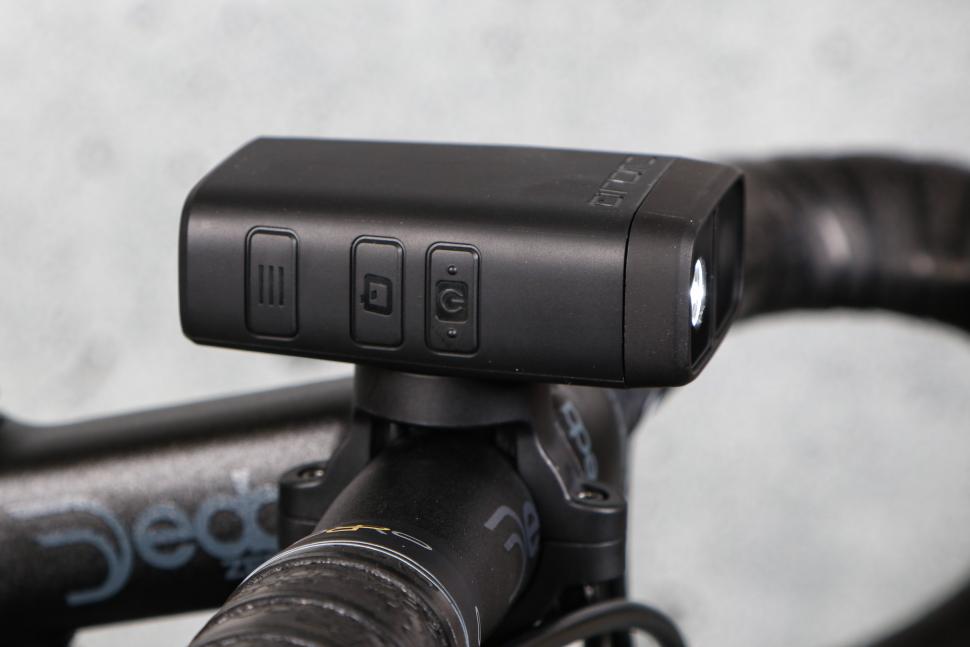
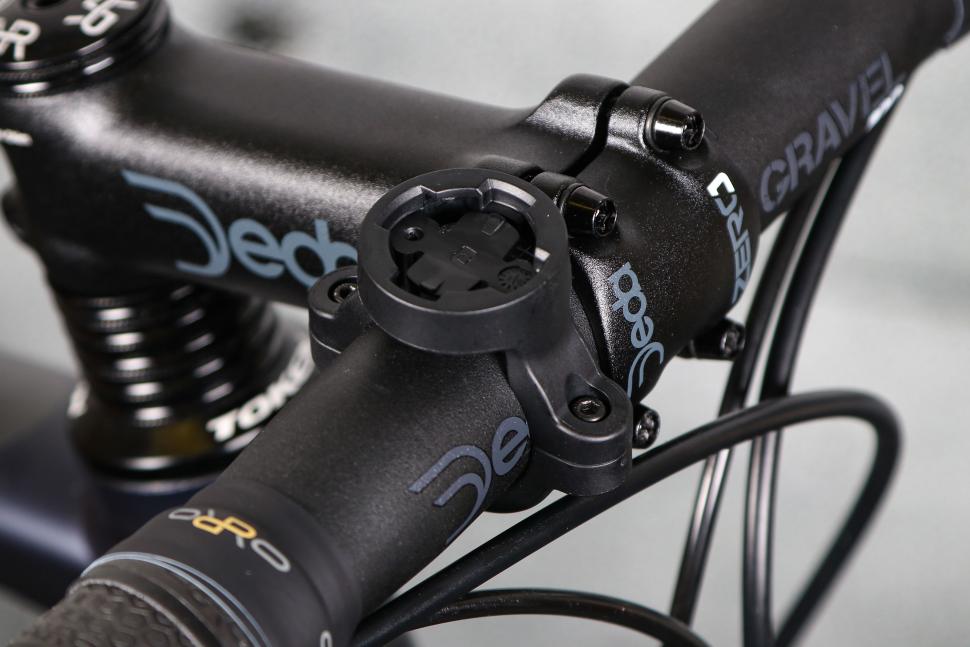
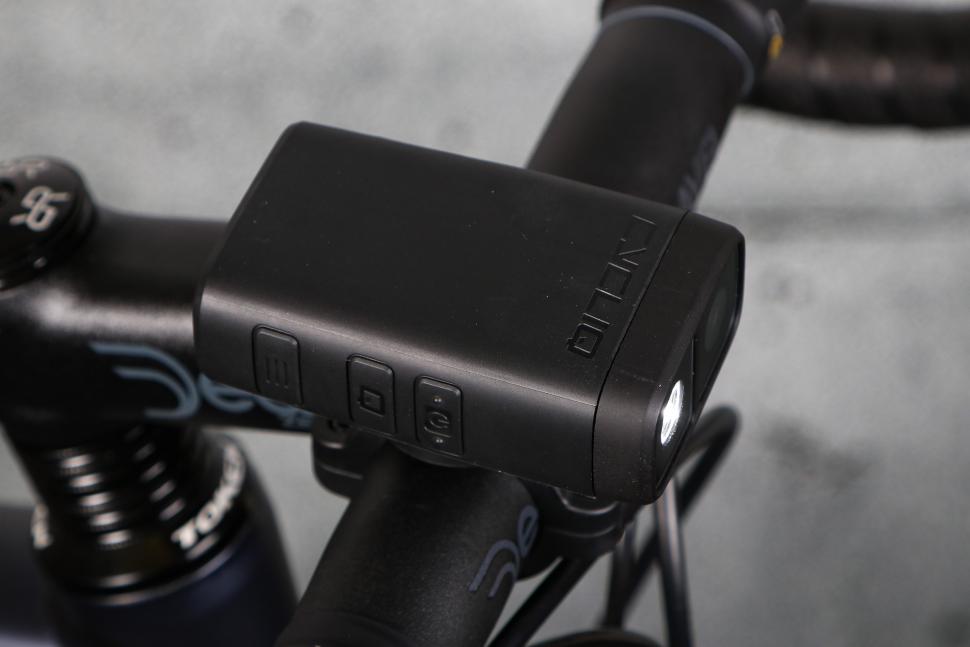

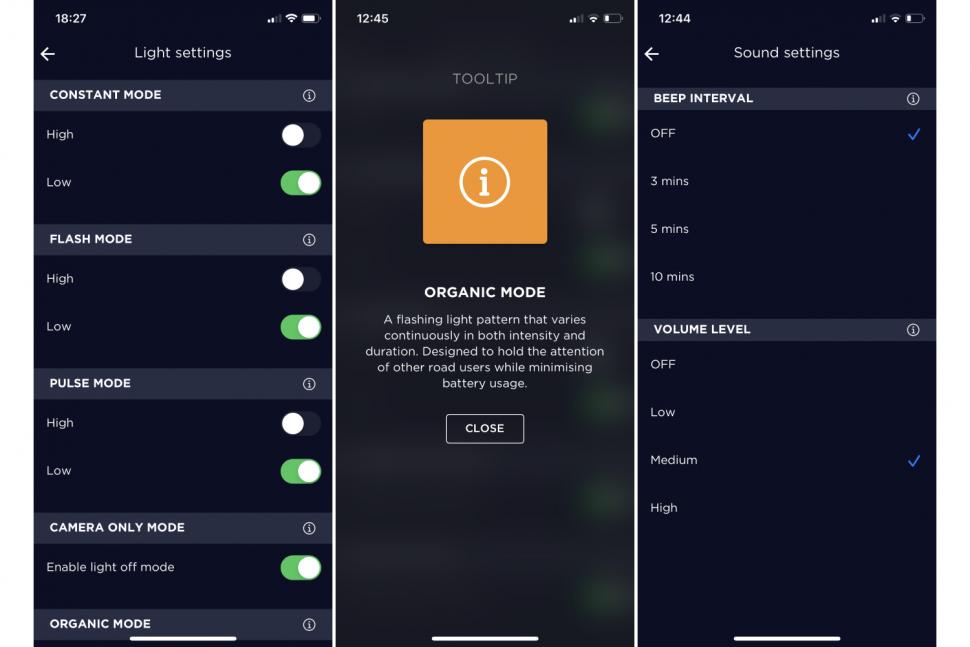

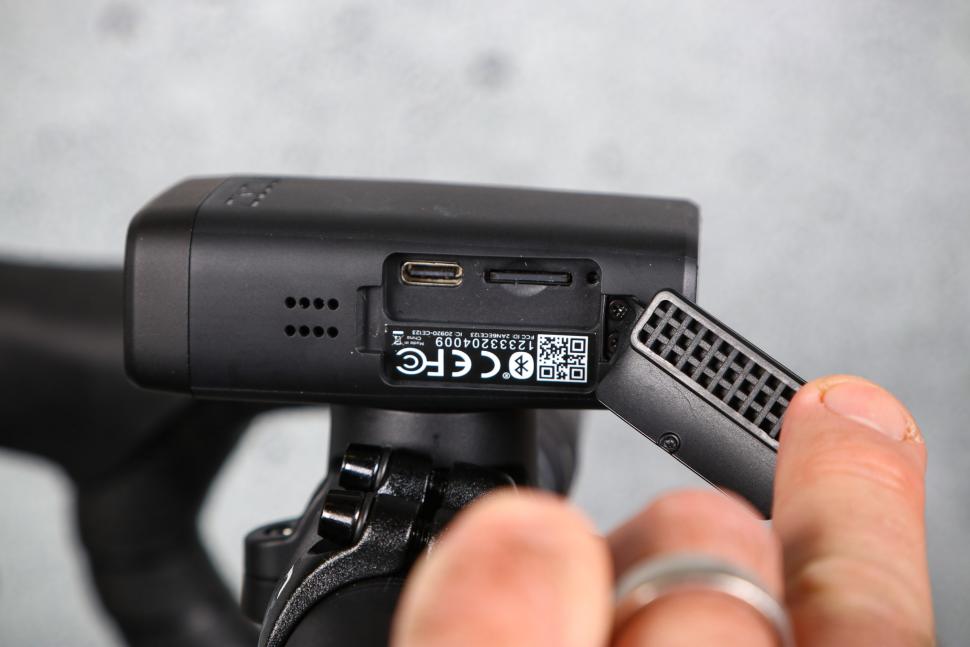




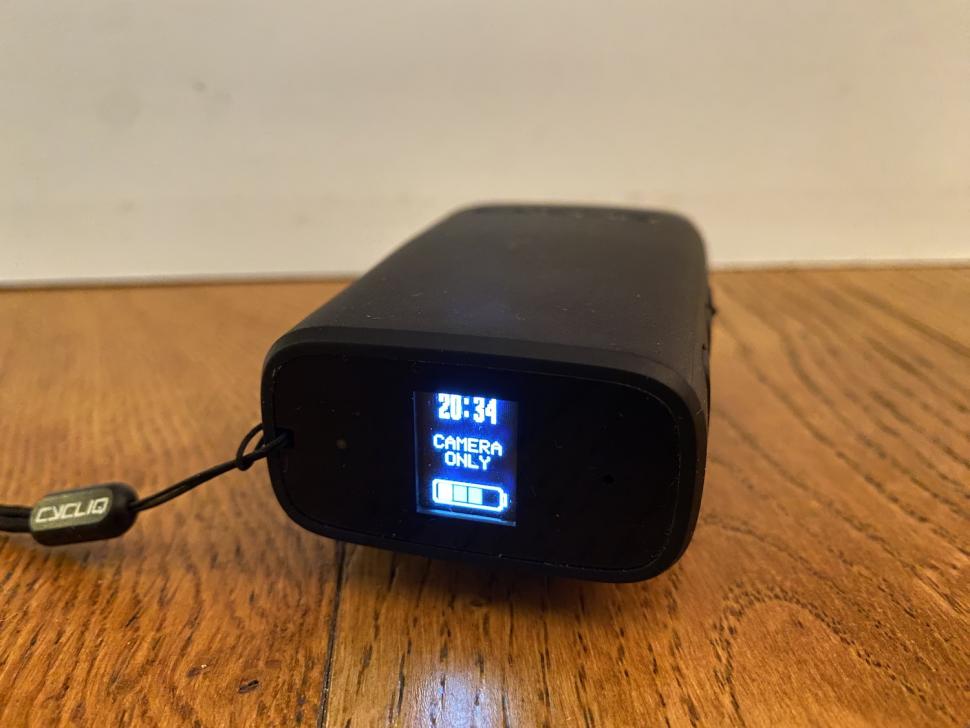
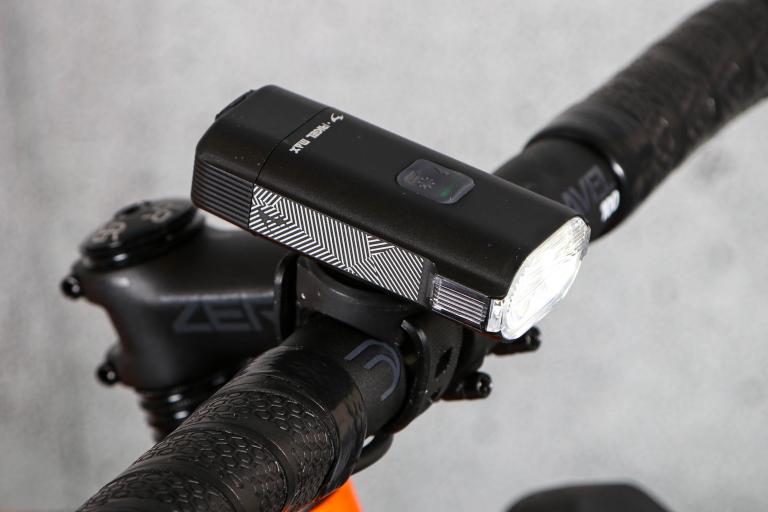
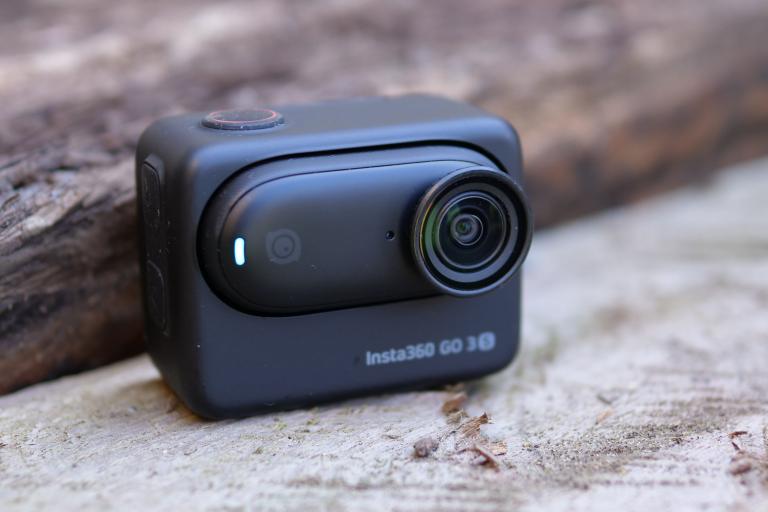
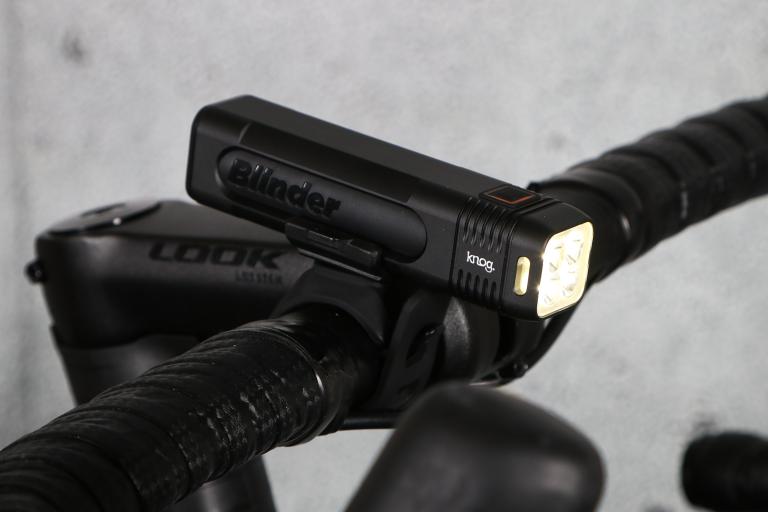

Add new comment
38 comments
I can't comment on how easy it is to change the batteries on the Fly 12, but I have just changed one on the rearward Fly 6 CE (Gen 2). The only complication is there is a tiny circuit board that needs removing from the old battert & reattaching to the new. Sounds complicated, but if an electronics numpty that needed to actually both buy a soldering iron and figure out how to use it first can do it, anyone can. As a first (and hopefully only) time, it took me about fifteen minutes to the strip the Fly 6 down making notes of what went where etc, then about half an hour to put it back together.
Cost £10 for the battery (a Panasonic NCR18650B 3400mAh 3.6V) and if you order one, order it 'with tags'. The cost of the battery was probably OTT for what it was, but that's the real cost of buying not just one, but one of a known & quality make from a proper battery company so I knew it wasn't a Far East Ebay special knock off. The soldering iron 'kit' was a cheapo from Amazon and cost £14, but that included everything I needed. Lastly you do need a bit of insulation tape or similar as the original battery has a couple of very thin foam strips around it to act as padding against the internal sides of the light. I managed to unpeel one from the OEM battery, but the other tore when I tried to take it off. I used the insulation tape to wrap around the battery to make it a snug fit before putting back in and to hold the little circuit board in place. As I said, if a numpty with big hands who doesn't exactly have nimble fingers or specialist eqipment can do it, anyone can.
If, or more likely when the battery on my Fly 12 dies, I'm going to attempt the same.
I use an Insta360 X4 but I would buy two Fly 12 Sport's and fit a red lens for the rear facing one.
Used many products to film from the Midland brand.
Get a lot of stuff cheaper as I have a friend that works at Pama UK, nearby.
I feel for you getting knocked off.
I got taken out many times on a bicycle, then moved onto a moped, motorcycles and scooters.
Yes, I got knocked off them too, too many times in the 1990's and 2000's.
I am in a manual wheelchair now but have had to learn to drive to get anywhere.
I am conscious of other road users especially cyclists and equestrian riders.
My heart is in my mouth as I crawl past giving a wide berth and always get upset when other driver's are being arseholes and get too close.
I was a motorcycle courier for 11 years, advanced motorcyclist, I know the Highway Code and Road Traffic Act off by heart.
There's codes for allowing pedestrians to cross junctions and the distances to pass cyclists. There's a code especially for allowing buses out of their stops. The number has changed from last year's, 192 to another number that contradicts Code 4.
The Road Traffic Act contradicts The Highway Code too.
I get waived on when the police have ever pulled me over because they know they'll have to ring up control or use Google to check the rules.
I always have an Olympus dictating machine recording when out on a drive or ride on one of my specially adapted motorcycle.
The obscenities are heard and then I speak the registration number with a description of the vehicle, bearing in mind, I am colour-blind and have visual contrast sensitivity too.
Ride safe.
Design and concept is great, build quality and customer service are not quite up to the same level. Unfortunately for an expensive item they don't last very long and when you need customer service it isnt a good experience. This really is a shame because the product concept is unique and brilliant, just not a wise way to spend one's money.
Spot on review as far as my experience with the Fly12 Sport.
I run in underneath my Wahoo, using an aftermarket out front mount on my winter bike. Very solid. Same setup on my other bike using Cannondale proprietary integrated mount with a 3d printed adapter. There's a wealth of 3rd party mounts out there.
Not 100% sure which is the best image setting for UK winter, but have been using the 1080p 60fps EIS setting. Had a TVP letter today stating that my one video submission had resulted in a driver awareness course so all good.
If anyone is interested here is a guide to replacing the batteries on the older Fly 12
https://www.ifixit.com/Guide/Cycliq+Fly+12+Battery+Replacement/129494
If you're competent enough to follow those instructions then I'd guess you could take apart one of the newer models and figure it out. A lot of products use 18650 batteries these days and as long as you can use a soldering iron and understand the dangers of lithium batteries it's pretty easy.
If you've never used these type of batteries before though I'd recommend researching what the different specs mean like capacity and discharge rate and how to handle them safely.
Good spot on ifixit. I've looked on thier site before and found absolutely zip, which probably demonstrates that I'm a total plank. I put a new battery in my aged iplayer following ifixit's suggestions so I'm reassured by the online instructions. Hopefully by the time I need a new battery in my Fly12 CE someone else would have played the guinea pig and put some photo instructions up. Thank you posting the link.
There is a semi guide to the Fly12CE in the comments. Sounds like its glued.
Is there a similar guide for the Cycliq Fly12CE?
Rick Tan - May 17, 2021
I didn't find one, but I did manage to open mine.
1. Leave the side panel on, remove the micro-SD card.
2. Pry off the rear plate covering the speaker and microphones.
3. Unscrew the 4 screws now visible (under the waterproof adhesive).
4. Pry open the sub-plate those 4 screws were retaining.
5. Disconnect speaker and microphones.
6. Unscrew those 6 screws.
7. The internal should slide out freely.
At this point I removed the bar over the battery, warmed the case to help free the battery, and pried it out.
My FLY12 had sat unused for a while, and the unit wouldn't charge at all.
I opened the top of the battery, where the wires come out, and measured the voltage of the batteries before the protection circuit, it was around 2.4V. Low, but likely before actual damage occurred. I trickle charged the battery up to 3.5V, at which point the cell could be charged via the regular charging circuit.
If it comes to it, I think I could find some new pouch cells and replace the original cells, keeping the original protection board.
This is a truely terrible product. Mine kept turning the ANT+ on even when it was in "airplane" mode.
That meant:
a) that it was always flat when I needed to use it.
b) it destroyed its own battery (which can't be relaced).
A complete waste of money. Rubbish.
Interesting, given that "the unit doesn't have any wireless capabilities (or ANT+ if that's of relevance to you)"
Previous version (CE) had Ant+ and a tendancy to run it's battery down, the review is of the newer (Sport) version though, which doesn't have Ant+ support.
Mine was a Fly 12 CE (2nd generation) which supprts ANT+ light networks.
If that's been removed as a feature then that's actually an improvement ...but once bitten twice shy. There's no way I would waste money on another throwaway Cycliq product.
Ive a FLY12CE which is been fairly solid for a few years now, been through some awful weather with it in that time, thats really only seem to impacted the speaker.
the biggest issue Ive had with it was the handlebar mount, which they seem to have fixed, and the lens is plastic, so scratched stupidly easily, even with careful handling. So all my nighttime video ends up looking like a starry blurry mess now, and given the nightime snapshot in the review, that might not be fixed if thats the best you got out of it.
long battery life is essential for me, and why I think that 360 camera is a waste of time, the 600 lumens light on steady mode is an absolute godsend on unlit roads, where youve got street lamps you dont need it, and in fact I use other lights to then maximise video battery, but its a handy to have.
so to hear the new one sort of compromises some of those features doesnt seem positive, and now we have an even more bewildering number of video options and Ive no clue which is the best to record dash cam footage with, Id far rather simply have the best footage, than have to bother trying to work out a digital faux frame rate or size of frame, or HDR processing makes it better.
we arent using these cameras to make movies with I think is something these camera makers dont understand yet.
.
Superb review! Tells any potential purchaser exactly what they need to know. Excellent!
.
Thanks.
.
I've had a Fly12CE and a now on a Fly12 Sport.
Did I get a Reverse Friday Special as certainly neither of my units suffer anywhere near the issues anyone else seems to have.
In fact, there are only two gripes I have with the 12 Sport:
- that poxy 1/8th turn mount that makes it difficult to get hold of alterative mounts (there's a guy on ebay that 3d prints saddlebag mounts, under saddle mounts and a couple of others too, and they are bloody excellent)
- certain video modes produce an overlap of frames on the video segments, meaning that stitching segments together now requires manual alignment, and not an automated process in something like ffmpeg.
My 12 Sport battery lasts over 7 hours - I only run it in camera mode, and with Electronic Image Stabilisation turned on.
Charging is a doddle... plug a cable in.
For downloading video I use a card reader, rather than plugging the laptop in to the camera.
Video quality (with EIS) is fantastic in bright light (sun behind), brilliant in normal light, reasonable in low light and streetlights.
Where it struggles is high contrast (brilliant sunlight and deep shadow) and total darkness - but that's camera physics for you.
Number plates in darkness ... well any camera will struggle with a highly reflective surface, bracketed on both sides by bright lights, while moving. Your own eyes can struggle in those situations.
Is it perfect? Nope... but unlike with the GPro, I can record a 5 hour ride on one battery, and unlike the Chilli Cams, the footage is totally viewable as there is virtually no image shake (and I gravel ride with mine).
Anyone wants to sit through footage of full rides over the last few years .. I'll happily drop a link to my YouTube channel and you'll have hours and hours of rides to choose from in most weather and lighting conditions.
Curious on how you find stabilisation on the sport affects image quality and legibility of number plates.
I always found it negatively impacted overall quality on the CE and keep it off.
I'd assume the higher resolution helps stop this with the sport.
I don't use it without EIS turned on, so I have nothing to compare it with.
On the whole, I have no issues with image quality... true, it can sometimes suffer from low level blocking, but this rarely is invasive.
It's a small, wide angle lens on to a small sensor, and it has a lot to cope with ... to start with the entire environment it is in is constantly moving and at different speeds; lighting is constantly changing - in many cases from bright sunshine to half deep shadow/bright glare and the lens is fixed wide open, so adjustments like f-stop and ISO are done by software.
Is it broadcast quality? Not all the time.
Can it distinguish number plates? Most of the time.
Is it better than nothing? Absolutely.
Room for improvement? Always.
I'm on the whole, happy with it.
It does what I need it to do.
A non-replaceable battery should really be a no-go in 2023, but hey, manufacturers want you to use their product for just as long as it takes for you to be not completely disappointed/disenchanted/enraged. Unfortunately, this results in short-lived gadgets at 300 quid apiece, and a mountain of e-garbage afterwards. This is why I have switched to Convoy-style lights with replaceable 21700 cells - the additional upside is that I can carry additional cells with me in case the one in the light runs out. For such bulky lights as the Cycliq, replaceable batteries should be mandated, just as USB-C charging is now being mandated to prevent a mountain of chargers from being built up any further.
The second point is that I hope they have improved firmware stability - my original Cycliq Fly used to freeze every now and then (especially often in winter conditions) and the only thing that could revive it was a hard reset using a paperclip. Hardly optimal mid-ride.
While I think my Fly12 CE and Fly 6 are great, as you rightly say, a battery that can't be replaced is simply outrageous. Sadly not even the usually excellent 'ifixit' site has a hack for any Cycliq unit.
I can't think of any modern electronics that come with replaceable batteries and it's trickier with a device that's designed to be waterproof/used in the rain.
I've had to do the paperclip trick a few times, but it's usually before starting on a ride - I think it gets confused when charging/disconnecting it.
Well, we had phones with replaceable batteries for years, some of them pretty indestructible (Nokia!) and the EU wants them back.
"the EU Parliament and Council have reached a provisional agreement to overhaul EU rules on batteries. These laws will cover the complete life cycle of a battery sold in the EU. Notably, these laws would require smartphones to come with batteries that can be easily removed and replaced."
The waterproof argument does not quite hold water really - Convoy lights are well waterproofed with replaceable cells, and Cycliq lights have micro SD slots and charging ports that also need to be protected from water. Not a huge engineering challenge. I suspect it's much more about planned obsolescence / price gouging on battery replacements (as in Apple's case).
Don't get me wrong, I like replaceable batteries as it allows an easy method of extending the life of the product. However, I cannot think of anything that I've bought in the last 10 years that has had replaceable batteries (excepting maybe laptops, but they're not standard batteries). I think the overriding principle nowadays is that the item becomes obsolete before the batteries fail.
Edit: I've got a video doorbell that takes a couple of replaceable 18650 cells and I've got a torch that takes the same too.
In the case of lights, this is certainly not true. There is nothing that would make my light obsolete in two years' time. My old Lezyne light, which is four years old, is hardly obsolete either, but its run times have certainly deteriorated. It has a soldered battery pack, which is not ideal, but it consists of 2 standard 18650 cells and can be replaced by someone handy with a soldering iron. This is much better than the Cycliq approach.
With phones, the "obsolete before batteries fail" statement is not true either - in each of my mobile phones, I had the battery replaced at least once before discarding the phone itself. The smartphone life cycle is not two years at it used to be, but - thankfully - more like four years now. Hence the need for (ideally user-) replaceable batteries.
I would recommend not using a soldering iron near 18650 or other size lithium cells unless you know what you're doing. A high capacity iron is required as otherwise too much heat will enter the cell which could then start burning.
I'd expect phone batteries to last for four years or so. Phones are trickier though as they aim to be as thin as possible and usually have a highly specific battery.
Well, spot welding, whatever is the correct technical term. The point is, they are replaceable if the manufacturer enables them to do so and disassembling a Lezyne light is pretty straightforward.
4 years for a phone battery? You'd be extremely lucky. 2-3 years is the typical quoted range, and towards the end of that period, things can get pretty tricky at lower temperatures. So no, most phones will not go through their entire lifecycle on a single battery. And that's exactly why the EU wants to mandate user-replaceable batteries. In modern electronics, no less.
The Nokia G22 has just been released this week which is designed with a user replacable battery, screen and charging port so at least one manufacturer has realised consumers are concerned about these issues.
That's good. I am in favour of user replaceable batteries, but the tech trend has moved away from them, especially with things like earbuds etc.
Out of interest, I just looked up how to replace the battery on a SteamDeck which is known for having a user-friendly attitude towards its hardware (e.g. replacing the internal SSD is supported) and that requires multiple heating/cooling cycles to get the glue to release the battery.
Well as this is primarily a camera.. almost every single action camera will have a replacable battery, it's pretty much essential.
Not all GoPro models feature user-replaceable batteries and I've seen many other brands that don't have them. There's a bunch of Fly6 (rear camera/light) imitations that also don't have replaceable batteries.
Most of them do, unless they are old models or cheap/ compact. You were saying that no modern device comes with a replaceable batteries, and they clearly do.
There's a lot of hate coming through here.
I'm still running the original Fly12 though it has a bit of a rattle where it's been dropped onto concrete a few times and the casing wants to separate into two. I'm kind of waiting for it to stop working so that I can get the newer, smaller, lighter one - I don't really need the longer run times and the light is bright enough for city riding (I use a separate light if I want high lumens).
I've had poor experience from Cycliq support when a Fly6 gave up the ghost - they just didn't respond for months, but eventually I managed to get it escalated and got a replacement which has been working fine for a few years now.
The big issue with Cycliq is that they don't have a good competitor to keep them on their toes - nothing else has the convenience for use as a commuter/incident camera.
Pages